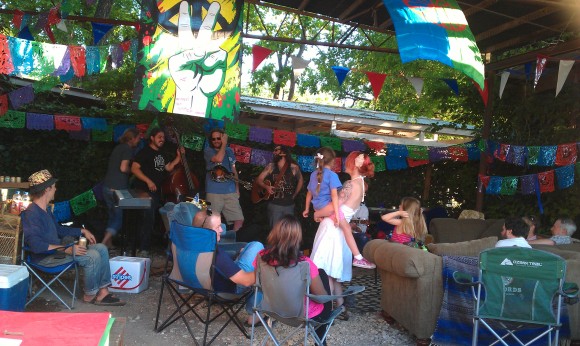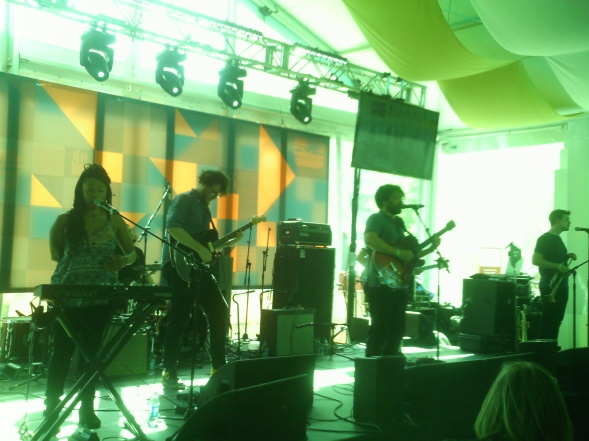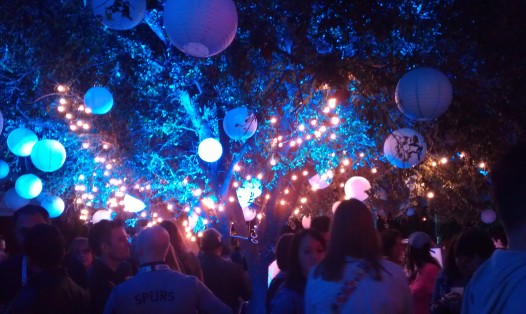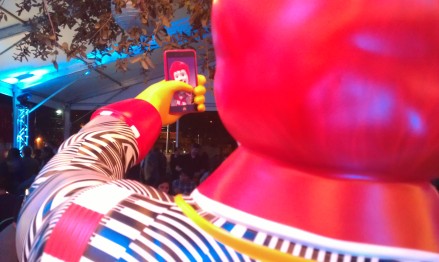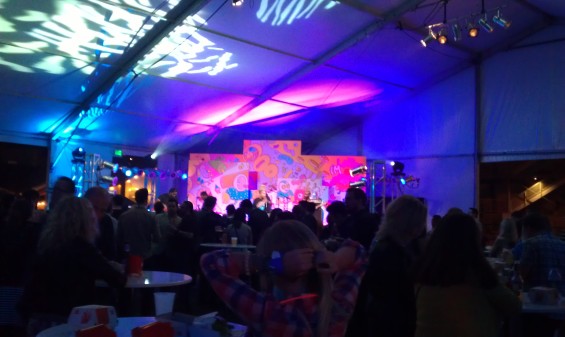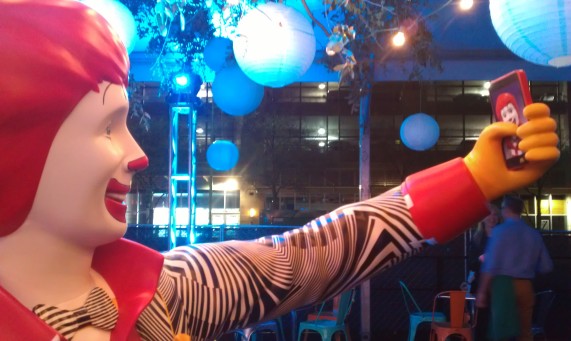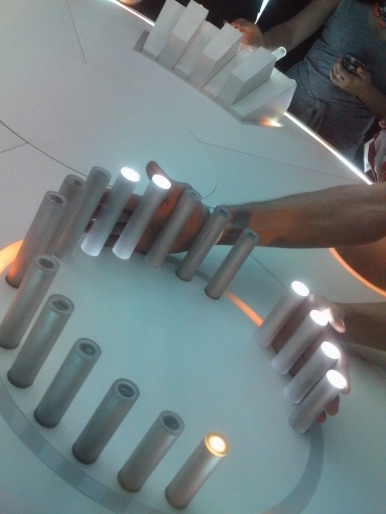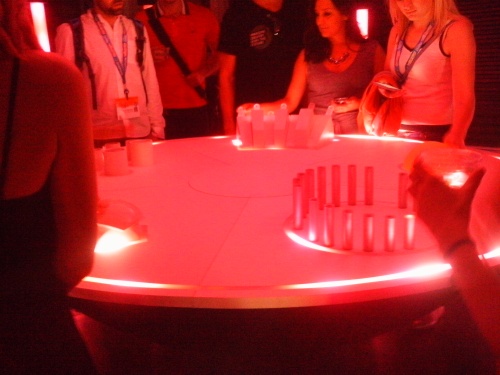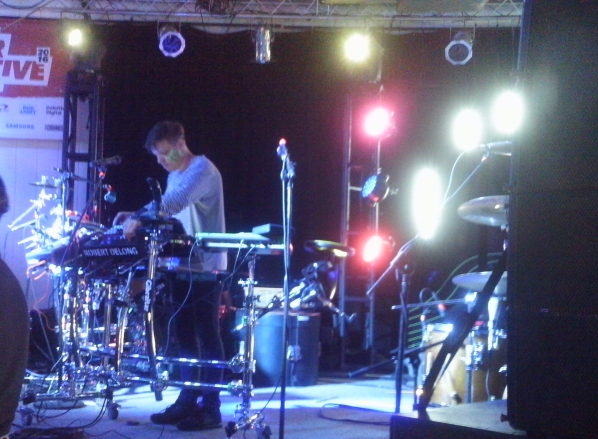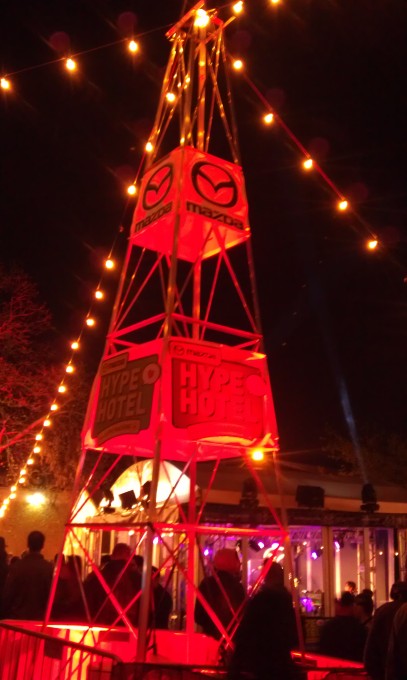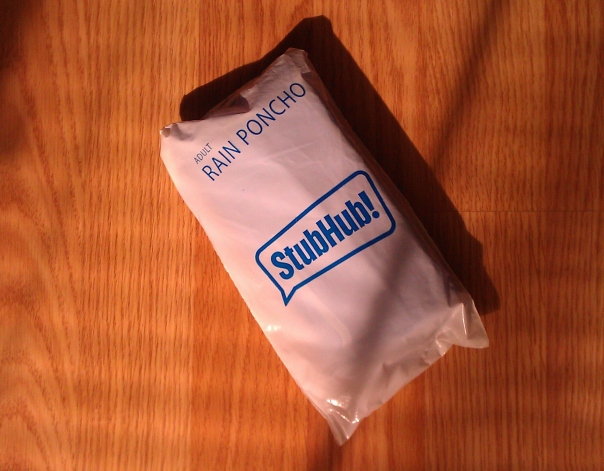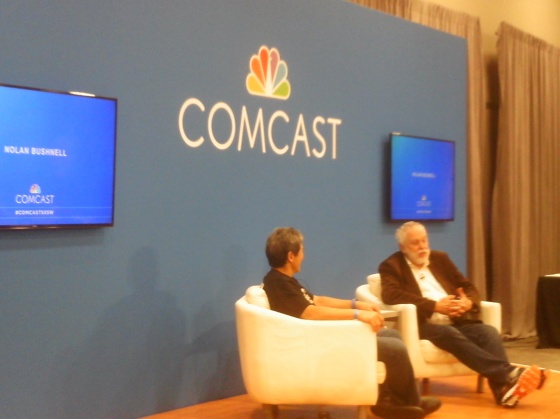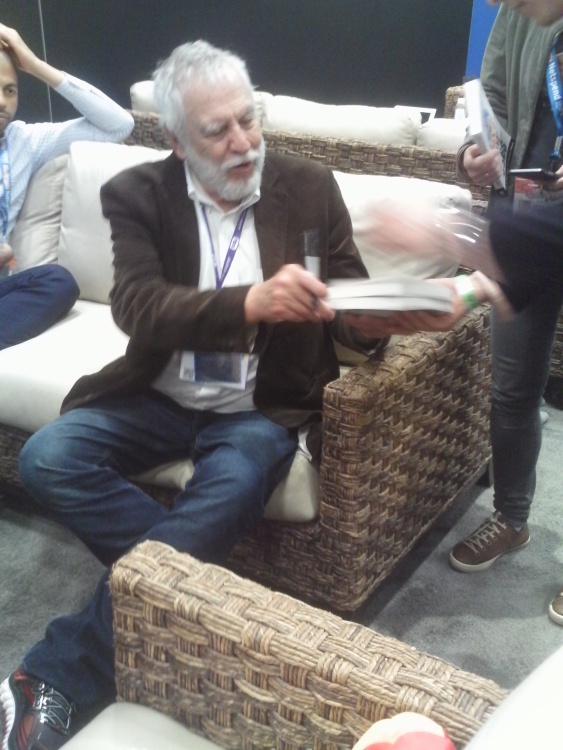Occupy Cheatham Street
It’s a sunny afternoon in San Marcos, Texas. The air is full of smoke and music as the area around Cheatham Street has been transformed into the Occupy Cheatham Street Movement. The Occupy Movement started on Monday, April 27, and is continuing until Saturday. At night, there’s music in the bar. By day, there’s music outside of it–specifically in a parking lot next to the Woodshed (a small recording studio) that has been transformed into something called “Fort Badass.”
The tour bus of Todd Snider is parked on the side of Cheatham street, adding a particularly dramatic ambiance to the events. He is filming a documentary during the Occupy week. There is a ragtag group of grungy musicians with guitars, violins, harmonicas, and other methods of expression gathered here in fellowship and protest.

Just what are they protesting? Ryan Seiler, local musician, has written an anthem to explain. The lyrics are scrawled in sharpie across five brown paper bags. The song says “peace love and anarchy/right here in the USA/ if all of ya’ll would just be cool.” As he starts to sing, several others that have gathered in the circle join in and it becomes clear that this ain’t the first time they’ve sung this song here.

Cheatham Street is a self-described “honky-tonk” nested in the heart of the Texas hill country. The town is San Marcos–described by some as a town that reminds them of what Austin used to be. It’s a college town, by some definitions. Texas State University looms on one of the highest hills and approximately 35,000 students that attend..
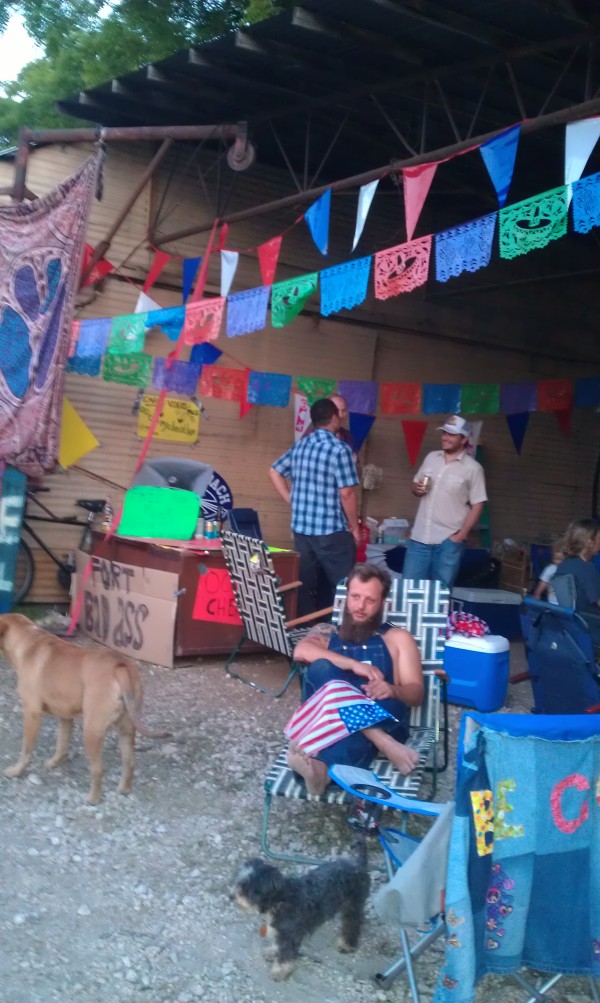
Cheatham Street is located on Cheatham Street. It’s right by the Greyhound station and several blocks away from the “Square” that sometimes serves as playground for the college undergrads. The bar is right by the train tracks. Thin walls shake when the train wooshes past. Musicians you have and haven’t heard of come out and play a few songs in the small room to a comparatively gentle audience.
The walls are covered with pictures and memorabilia documenting the history of the place, as well as the requisite assortment of light-up beer signs and things shaped like Texas. There’s a longhorn skull hanging on a post near the entrance. The bar’s on the left and it provides a clear view of the stage. George Strait and Ace in the Hole are known to have gotten their start at this venue. Terri Hendrix, Townes Van Zandt, Randy Rogers Band, James McMurty and many others have played at Cheatham Street.
Many of these famous folks that started here came for the Songwriter’s night. Kent Finlay, owner of Cheatham Street, was a singer and a songwriter. Cheatham Street grew out of his passion for music and songs. Kent Finlay’s Wednesday songwriter night provides budding talent with an opportunity to take the stage and play the songs they wrote. All you have to do is sign your name on the list and be respectful to the other musicians. It’s a listening night.
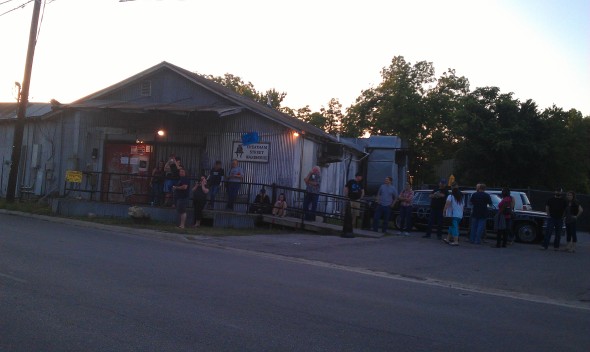
On Wednesday nights, Kent Finlay oversaw the songwriters night. He was usually found sitting near the stage on the left side of the room. His iconic hat and red bandana added a strong gravitas to his presence. He would occasionally nod approvingly but was fully willing to call people out if they were not respecting the spirit of the night. Sometimes he stood up to remind people that it is a listening night.
The Wednesday that fell during the Occupy Cheatham Street Movement was no exception. The room is unusually crowded, but the people are quiet. Sterling Finlay, Kent’s son, also a musician, makes introductions and reminds the crowd that it is a listening night. Halley Anna Finlay, another musician, and descendant of Kent, is also here to play some songs.
During the introductory period, there is a guest appearance by San Marcos Mayor Daniel Guerrero, who was allegedly “kidnapped” by the Occupy Cheatham Street movement. Apparently, he was pronounced “cool” and released back into his environment. He speaks fondly of the venue and the influence that Kent Finlay had on the musical community.
Todd Snider and Terri Hendrix take the stage to play a few songs. Both prelude their songs with brief descriptions of the effect that Kent Finlay had on their lives as artists. This remains a pattern of the night. As musicians take the stage, many take a moment to express gratitude to Kent Finlay for his contributions and influence. Included among them are songwriter night veterans Victor Holk and Missoula Slim, who have been intermittently occupying Cheatham all week. The night concludes with Sterling Finlay singing “They Call it the Hill Country.” The song is a fond ballad calling for the preservation of the hill country and is the traditional tune that Kent Finlay always used to close songwriter’s night.
The Occupation of Cheatham Street continues. It’s been on since Monday and each day the movement grows. The growth is measured in the addition of various items of furniture to the rather large tent-like structure fondly named Fort Badass. On the sunny afternoons, musicians wake and start to gather beneath the shade of Fort Badass.
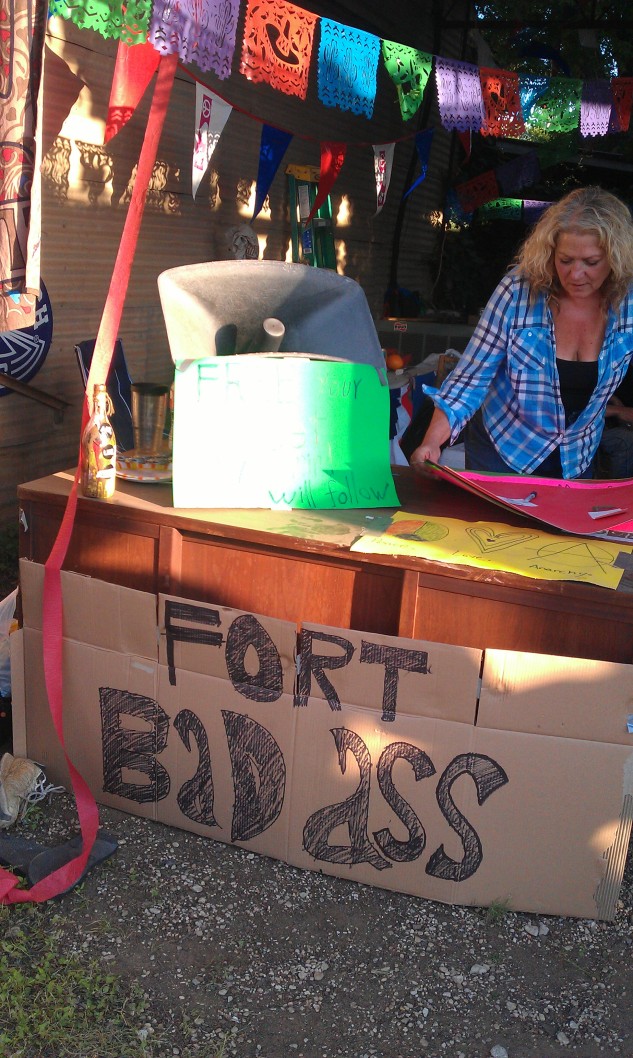
Various signs surround Fort Badass. They are slogans generally relating to the theme of the protest the “be cool” movement. Beneath the tent is a table with various snacks and drinks. Coolers of beer are plenty and there is a particular smoke in the air.
In the middle of the tent, there is a circle of chairs and a couch. This is where people gather and play their songs. Some follow in the tradition of the songwriters night, taking their turn to play and to sing. At various times, a group of musicians will stand up at play to the small crowd that has gathered.
The musicians are a mellow lot. They encourage each other in their musical endeavors and speak appreciatively of the songs that are played. When the unofficial official anthem is played people join in right around the chorus declare that everybody should just “be cool.” And they are all pretty cool.
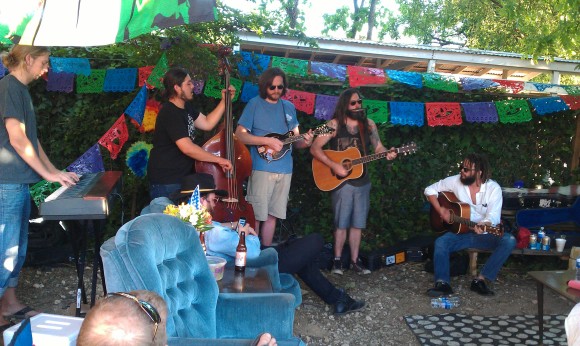
Things are happening all week. A steady stream of people are filtering in and out as the hours pass. There is talk of moving a small piano out to Fort Badass, so that a more proper rendition of “Seven Spanish Angels” might be played. A keyboard serves as a substitute. People are wandering around with nonsensical picket signs. Caitlyn Holk is silk-screening shirts with the unofficial official logo. There is a rather ornery pig. As evening draws near, a longhorn steer is brought out to graze placidly beside the street.

Every night there are concerts with an assortment of musicians. The final concert is on a Saturday night after a particularly long day of music and mellowness. Todd Snider takes the stage and plays his heart out with a variety of signature songs celebrating the lifestyle and culture that he represents. He sings songs that range from the more than slightly political to ballads to a little tune called Beer Run.
Throughout the night, a continual theme is appreciation of this particular place. He expresses a gratitude for Cheatham Street and everything that has happened this week and the people who made it possible. Throughout this week, people came from near and far to protest nothing and appreciate everything. They sang stories and told songs. They were cool. Todd Snider describes the Occupation of Cheatham Street as a success.
